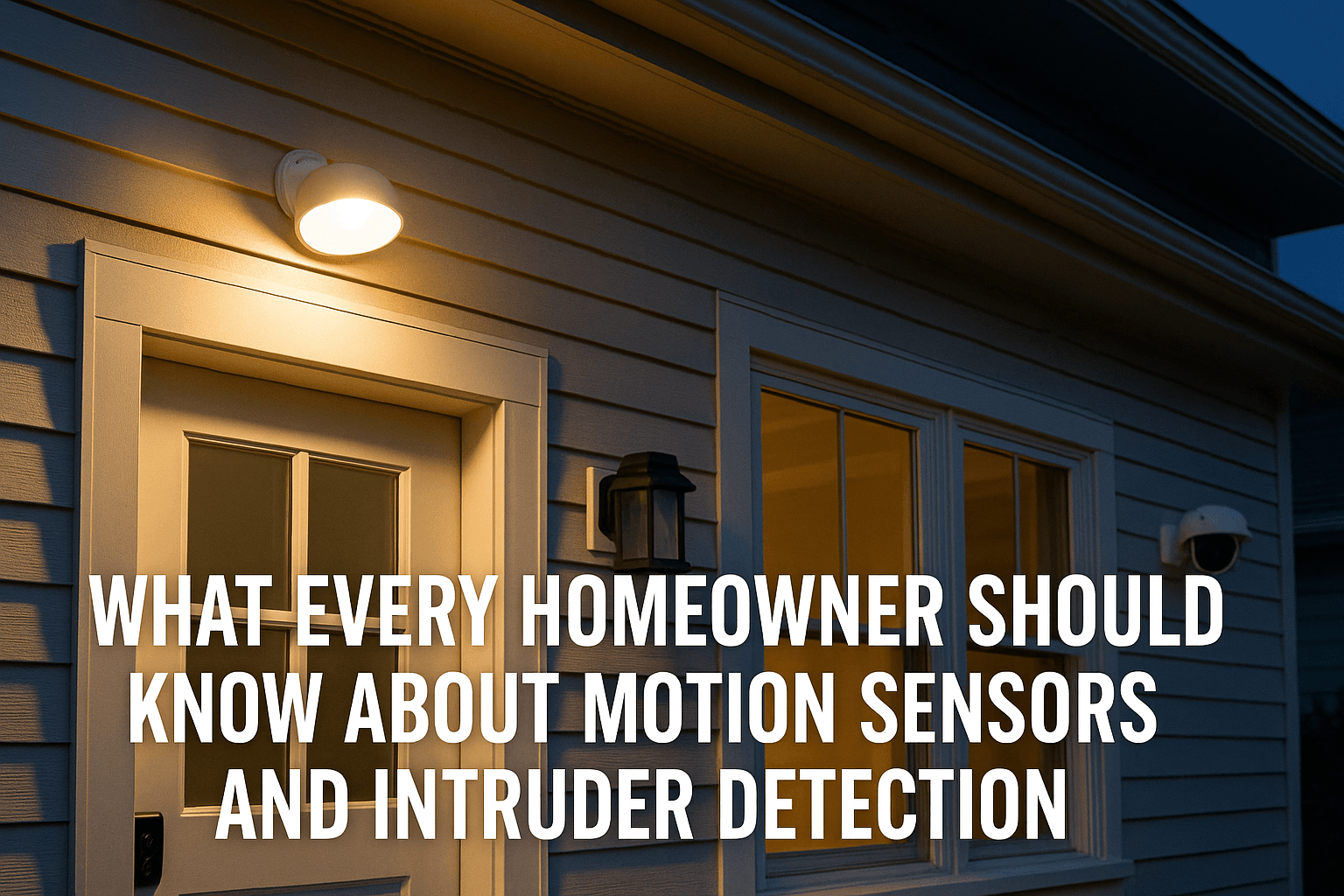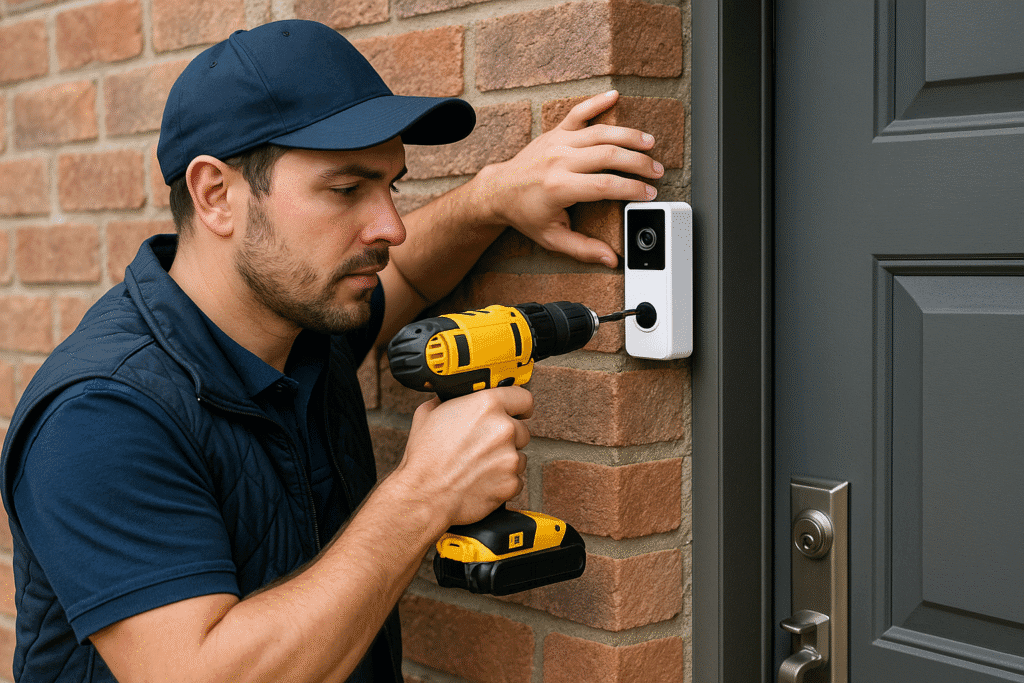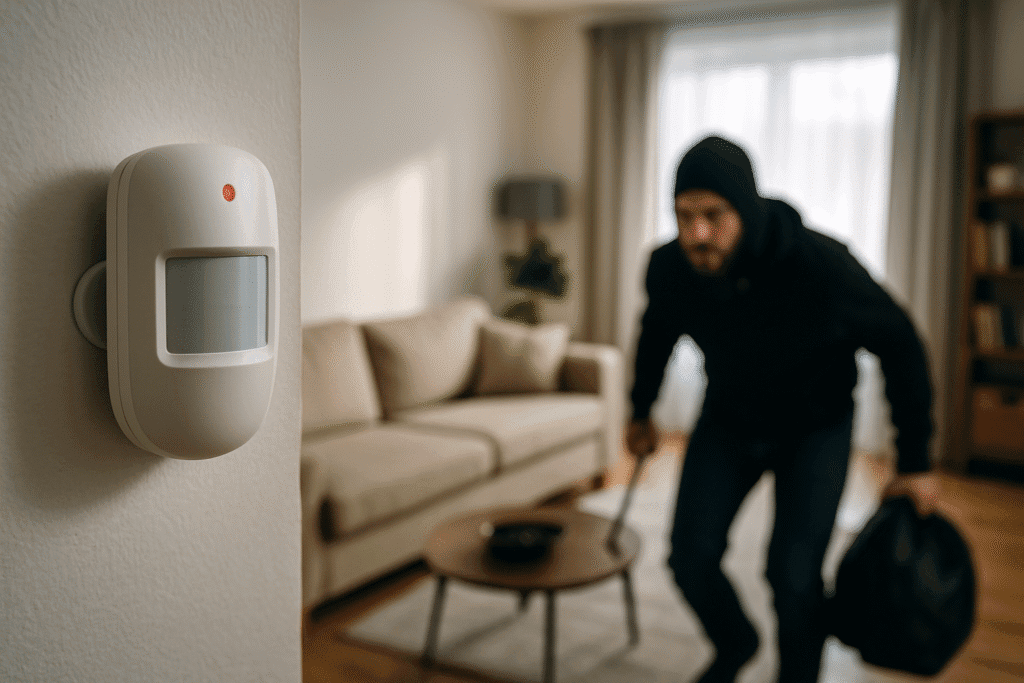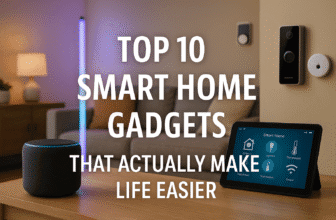
What Every Homeowner Should Know About Motion Sensors and Intruder Detection
🏠 Introduction: The Silent Guardians of Home Security
When most people think of home security, they picture cameras and alarms—but there’s one underrated hero in the setup that plays a critical role: motion sensors.
These small, affordable devices are often the first to detect trouble. Whether it’s an unwanted visitor on your porch, movement in your backyard, or a door opening when no one should be home—motion sensors act fast, alerting you to act before the situation escalates.
In this article, we’ll break down everything you need to know about motion sensors: how they work, where to place them, types to choose from, and how they fit into a broader intruder detection system. Let’s make sure your home is smarter, safer, and better protected.
🔍 What Are Motion Sensors?
Motion sensors are electronic devices that detect physical movement in a specific area. Once triggered, they can:
- Sound an alarm
- Send a notification to your smartphone
- Turn on lights or activate cameras
- Trigger automated routines in smart home systems
They’re a crucial part of any modern intruder detection system, acting as the first layer of defense when no one’s around to keep watch.

⚙️ How Do Motion Sensors Work?
There are several types of motion sensors, but most fall into these categories:
1. Passive Infrared (PIR) Sensors
- Detect body heat (infrared energy) changes
- Common for indoor use
- Energy efficient and budget-friendly
2. Microwave Sensors
- Emit microwave pulses and measure reflection
- Cover larger areas than PIR
- More prone to false alarms from non-human movement
3. Dual Technology Sensors
- Combine PIR and microwave for fewer false triggers
- Ideal for high-security zones
4. Ultrasonic & Vibration Sensors
- Less common in home setups
- Detect motion via sound waves or surface vibrations
Each type has its pros and cons, but for most homeowners, PIR or Dual Tech is the sweet spot between cost and reliability.
🧭 Best Places to Install Motion Sensors
Correct placement can mean the difference between a reliable alert and a missed intruder. Here’s where you should focus:
✅ Entry Points
- Place sensors near front and back doors
- Also near garage and basement entrances
- Combine with door/window sensors for extra security
✅ Hallways & Stairwells
- High-traffic zones for intruders
- Capture movement between rooms or levels
✅ Living Rooms or Common Areas
- Especially if you keep valuables in sight
- Mount higher on the wall for better coverage
✅ Outdoor Spaces
- Driveways, porches, and backyards
- Choose weather-resistant models with adjustable sensitivity
💡 Pro Tip: Avoid pointing sensors directly at windows or heating vents to prevent false alarms.

💡 Motion Sensors + Smart Home Integration
Today’s motion sensors do much more than sound an alarm. Connected to a smart home hub, they can:
- Trigger cameras to start recording
- Turn on lights when someone approaches
- Lock doors or close blinds
- Send you instant mobile alerts
- Even alert emergency services if integrated with a monitored system
With platforms like Amazon Alexa, Google Home, SmartThings, or Apple HomeKit, you can create routines such as:
“If motion is detected in the hallway between 11 PM and 6 AM, turn on the hallway light and send me a notification.”
The flexibility is powerful—and budget-friendly.
📦 Recommended Motion Sensor Devices for Homeowners
You don’t need to spend big to get reliable detection. Here are some smart, affordable motion sensors worth considering:
🔘 Indoor PIR Motion Sensor with App Alerts
Why it’s great:
- Battery powered with 120° detection range
- Sends mobile push notifications
- Works with major smart hubs
💡 Use it in: Hallways, bedrooms, or near staircases.
☀️ Outdoor Motion Sensor Floodlight
Why it’s great:
- Combines lighting and detection in one
- Adjustable sensitivity to reduce false alerts
- Can trigger camera recording or alert your phone
💡 Use it in: Driveways, porches, or backyards.
🧠 Dual-Technology Smart Sensor
Why it’s great:
- Combines microwave and PIR sensing
- Best for high-risk zones like garages or home offices
- Reduces false alarms from pets or HVAC
💡 Use it in: Detached garages, basements, or entryways.
📱 Motion Sensor Starter Kit
Why it’s great:
- Includes motion sensors, door/window sensors, and a hub
- Everything needed to start building your smart security system
- Often priced under $150
💡 Perfect for: New homeowners, renters, or those on a budget.
🛑 Common Mistakes to Avoid with Motion Sensors
Even the best sensor can’t help if installed or configured incorrectly. Watch out for these missteps:
❌ Placing Sensors Too High or Too Low
- Mount at chest-to-head height (6–8 feet) for optimal detection
❌ Pointing Sensors Toward Windows
- Heat from sunlight or moving trees can trigger false alerts
❌ Overloading with Too Many Triggers
- Too many alerts can cause you to ignore them—only set the important ones
❌ Ignoring Blind Spots
- Corners and doorways can create dead zones—test your layout thoroughly
🧠 Intruder Detection Strategy: Layered Security Wins
Motion sensors are powerful, but they work best as part of a multi-layered defense:
- Cameras = visual confirmation
- Door/window sensors = access control
- Smart lights = deterrence
- Smart locks = containment
- Alarms = immediate response
By combining motion sensors with these elements, you create a system that detects, records, alerts, and responds to threats before damage is done.

💬 Real-World Scenario: How Motion Sensors Saved a Home
Jason, a homeowner in a quiet neighborhood, was away for a long weekend. A motion sensor in his backyard detected movement at 2 AM.
His smart home system:
- Turned on floodlights
- Sent him a real-time push notification
- Triggered his outdoor camera to record
- Alerted a neighbor he’d linked into his setup
The intruder left immediately after the light came on. When Jason checked the footage, the police were able to identify the person thanks to the early trigger.
✅ One sensor, smart placement, and integration made all the difference.
🧰 Maintenance Tips for Reliable Motion Detection
Set and forget doesn’t apply to security. Keep your sensors in top shape with these tips:
- 🔋 Check and replace batteries every 6–12 months
- 📲 Test notifications regularly
- 🧼 Wipe lenses clean from dust or cobwebs
- ⚙️ Update app firmware when available
- 📐 Reposition if detection seems weak or inconsistent
It only takes a few minutes, but ensures your system works when it matters most.
💡 Bonus: Use Motion Sensors Creatively
Beyond intrusion detection, motion sensors can enhance convenience:
- Turn on nightlights for kids
- Automate entryway lighting when you get home
- Monitor your mailbox or shed
- Use them to trigger camera recording for wildlife (or nosy neighbors)
A motion sensor is more than a burglar alarm—it’s a smart trigger that adapts to your lifestyle.
✅ Final Thoughts: Don’t Overlook the Most Underrated Device in Home Security
If you want real, effective protection—motion sensors are non-negotiable. They catch what cameras miss. They act before doors are breached. And they alert you while there’s still time to respond.
Whether you’re building a budget system or expanding a high-tech smart home, these small devices deliver big peace of mind.
📌 Next Steps:
- ✅ Choose one or two motion sensors for your entry points
- 🛠️ Install them in high-traffic zones
- 📲 Connect them to your smart home hub or mobile app
- 🔁 Test them weekly for accuracy
- 🧠 Stay alert and informed

I am a USMC Veteran who worked with a Lot of computers and Technology while I was in. I became hooked and learned a lot in my 20 years.
At my store, I am passionate about bringing you the latest tech products that enhance your everyday life. Our mission is to provide quality, innovation, and value, making sure you find the perfect gadgets to fit your needs. Thanks for Your Support.. Larry Mac





